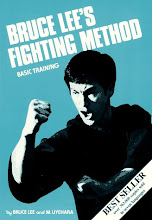Due to popular demand, we will now be all encompassing in our respected martial arts. In the last decade or so, MMA has blown up and become mainstream.
Brazilian Jiu Jitzu, Muay Thai Kickboxing, and Greco-Roman Wrestling are three of the core/most apparently effective styles.
As for *Conditioning:
1) ATP-CP System: High energy or explosive movements without oxygen (lasts about 10 seconds)
2) Anaerobic System: High energy or explosive movements without oxygen (usually lasts about 2 minutes)
3) Aerobic System: Low energy over long term using oxygen (15 minutes or more)
Let’s say you’re the one attempting to take-down your opponent(s) for 5 minutes. When you shoot in for a take-down, whether it’s a single leg, double leg, or other, this requires the ATP-CP system.
Now your fighting to pick your opponent up, switching from a single to a double or visa versa, pausing for a quick second, exploding again to take your opponent down, but he’s both strong and has great take-down defense. This requires the anaerobic system.
You finally get your opponent down, and the next opponent is fresh and ready to defend (or a real mma fight example, your opponent immediately pops back up and you’re starting over). After several rounds of this, you begin to tap into the aerobic system.
Here’s the point…
Why? Because you really haven’t done squat yet to develop your ATP-CP energy system, or any muscular conditioning.
Every time you attempt to pick your opponent up and he stuffs you and stays standing, that few seconds of explosive energy takes a toll not only on your heart and lungs, but now your body needs to provide oxygen to all of your muscles involved in that movement as well.
And since you haven’t developed this type of conditioning yet, your muscles aren’t going to be properly trained for this, thus wear out quickly and leave you gasping for air and your arms and legs feeling like noodles.
The wall drill is only one example of why you need to develop these three energy systems. In any MMA fight, you also need to take into account striking battles, defending take-downs, grappling scrambles and other movements that require a mix and match of all these different energy systems.
Summary
As you can guess by now, a good mma conditioning workout must focus on developing all three of these types of energy systems. If you lack conditioning in just one of these, then you’re still gonna gas out in any one of these scenarios no matter how well developed any one of the other energy systems are.
So if you’re just following a standard general fitness workout, or even worse, a conventional bodybuilding workout with a few random cardio exercises thrown in, you’re not fully preparing yourself for the type of gas tank you need to go the distance in a grueling mma battle.
If you don’t have the proper conditioning in ALL THREE of these energy systems, you’re gassing out one way or another.
In terms of how this article relates to Traditional Kung fu, we can see how the modern sport science is applied to training. The effectiveness of it all is now set on a public stage (The Octagon)
*Accordingly: If you don’t have the proper conditioning in ALL THREE of these energy systems, you’re gassing out one way or another.
Read More...
Summary only...
![]() •
Posted by
The TIL Ring
•
Posted by
The TIL Ring
![]() •
Posted by
The TIL Ring
•
Posted by
The TIL Ring
![]() •
Posted by
The TIL Ring
•
Posted by
The TIL Ring
![]() •
Posted by
The TIL Ring
•
Posted by
The TIL Ring
![]() •
Posted by
The TIL Ring
•
Posted by
The TIL Ring





